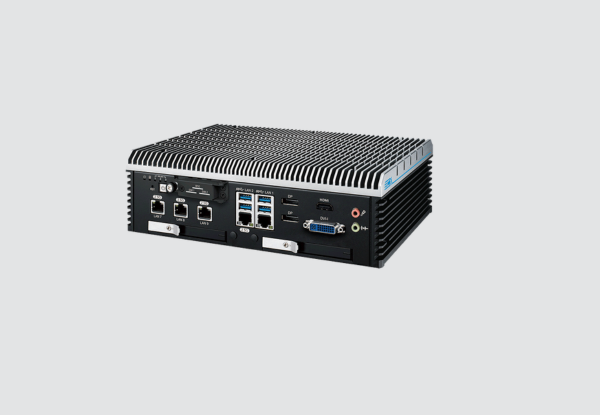1.Introduction
In contemporary society, tablet usage has surged, becoming an integral part of daily life for communication, entertainment, and productivity. The selection of an appropriate tablet is paramount, as it must cater to the specific needs and preferences of the user. Among the various types of tablets available, rugged tablets and standard tablets stand out due to their distinct characteristics.
In today’s tech-driven world, Global Infotech Solutions emphasizes the importance of selecting the right tablet for various applications, whether for business, education, or industrial use. Rugged tablets are designed to endure harsh environments and conditions, making them ideal for professionals in industries such as construction and fieldwork.
2.What Are Rugged Tablets?
Rugged tablets are specialized computing devices designed to withstand harsh environments and demanding conditions. These tablets are built to endure extreme temperatures, vibrations, and mechanical shocks, making them indispensable in industries such as construction, manufacturing, military, and outdoor work. Their primary purpose is to ensure reliability and performance in challenging settings where standard tablets may fail. Rugged tablets are often designed to function seamlessly as IoT gateway devices, enabling connectivity in challenging environments where standard devices might fail. Key features of rugged tablets include enhanced durability, water and dust resistance, and shock absorption capabilities.
3.What Are Standard Tablets?
Standard tablets are portable computing devices characterized by their slim design, touchscreens, and user-friendly interfaces. These devices serve a wide array of use cases, including home entertainment, office productivity, and educational purposes. Their affordability makes them accessible to a broad audience seeking versatile technology for daily tasks.
Key features of standard tablets include enhanced durability, with many models offering water, dust, and shock resistance to withstand various environments. This increased resilience is particularly beneficial for users who require devices that can endure accidental impacts or exposure to elements. Overall, standard tablets combine portability, ease of use, and sturdy construction, making them ideal for both personal and professional applications.
4.Key Differences Between Rugged Tablets and Standard Tablets
Rugged tablets and standard tablets serve distinct purposes, and their differences are largely rooted in their design and intended usage. One of the most significant variations lies in durability and build quality. Rugged tablets are specifically engineered to endure harsh environments, often featuring enhanced protection against drops, vibrations, and extreme temperatures. In contrast, standard tablets are designed primarily for indoor or light use, offering limited resistance to physical damage. Performance and specifications further differentiate these devices. Although rugged tablets are built to be durable, they often possess processing power and memory that are either comparable or slightly inferior to their standard counterparts.
Environmental protection is another critical factor. Rugged tablets commonly meet stringent IP ratings that ensure waterproofing and dustproofing, as well as military-grade certifications such as MIL-STD-810G. These features assure users that their devices can function reliably in challenging conditions. In contrast, standard tablets usually lack such certifications, making them less suitable for use in adverse environments. The design and aesthetics of these tablets also diverge significantly. Rugged tablets often appear bulkier and heavier due to their reinforced casings, prioritizing protection over style
5. Cost Considerations
When evaluating cost considerations between rugged and standard tablets, it is evident that rugged tablets typically command a higher price due to their advanced durability features. These devices are designed to withstand extreme conditions, including drops, water exposure, and dust, which necessitates the use of high-quality materials and specialized engineering. This fortified construction justifies the added expense for users in demanding environments, such as construction sites or outdoor fields, where reliability is paramount. In contrast, standard tablets are generally more affordable!
6. When to Choose a Rugged Tablet:
In various professions, the necessity for rugged tablets becomes paramount, particularly in fields such as fieldwork, logistics, healthcare, and military operations. These environments often expose devices to harsh conditions, including extreme temperatures, moisture, dust, and impacts. For instance, in healthcare, rugged tablets facilitate real-time patient monitoring and data entry in diverse settings, ensuring reliability in critical situations. Furthermore, in logistics, these devices streamline inventory tracking amidst challenging conditions. Investing in a rugged tablet offers significant advantages, such as enhanced durability and reliability, which are essential for maintaining productivity and efficiency in tough environments.
7. When to Choose a Standard Tablet:
When considering the appropriate device for various tasks, standard tablets emerge as an ideal choice for several scenarios. For personal use, such as browsing the internet, managing social media, or reading e-books, these tablets provide sufficient functionality. In office environments, standard tablets excel in handling productivity applications, enabling users to create documents, manage emails, and participate in virtual meetings with ease. Moreover, for media consumption, whether streaming videos or enjoying music, their lightweight and sleek design enhances portability and convenience. Their affordability further ensures accessibility for users who do not require extreme durability or intensive processing power.
8. Conclusion
When comparing rugged tablets and standard tablets, the distinctions are primarily rooted in durability, performance, and intended usage. Rugged tablets are engineered to withstand harsh conditions, featuring reinforced structures that resist water, dust, and extreme temperatures. In contrast, standard tablets prioritize portability and general functionality but may lack the resilience required in demanding environments. Ultimately, the choice between these two categories hinges on the user’s specific needs and work conditions.

